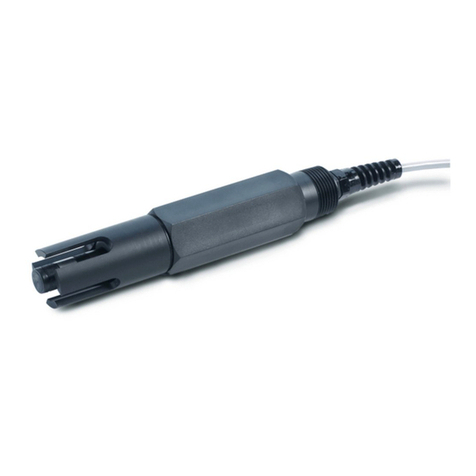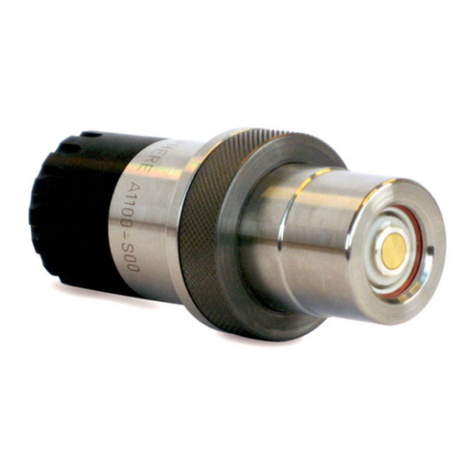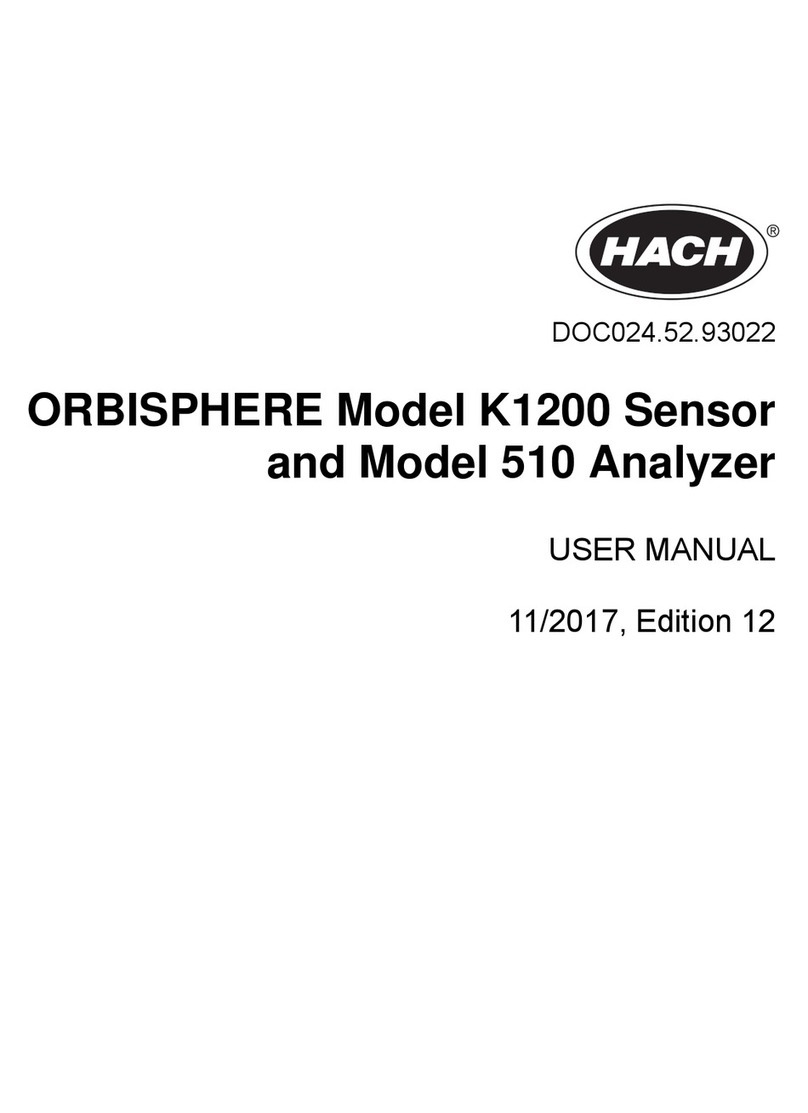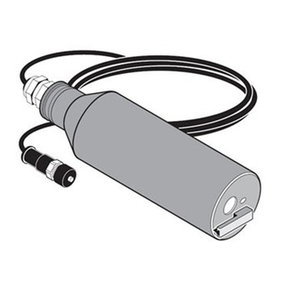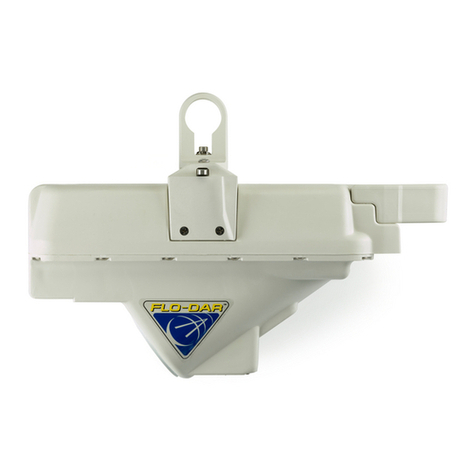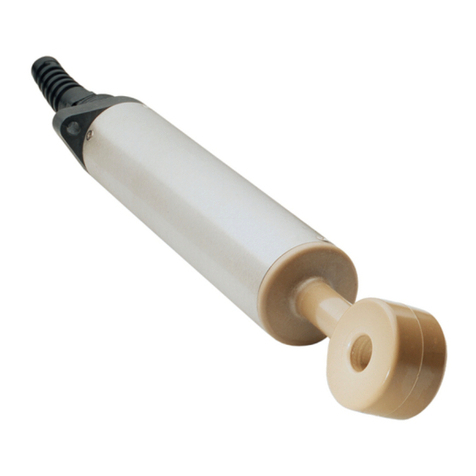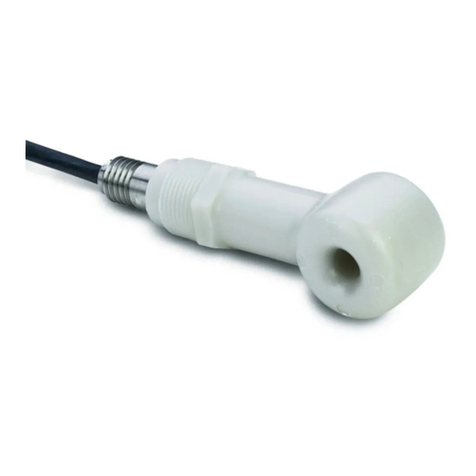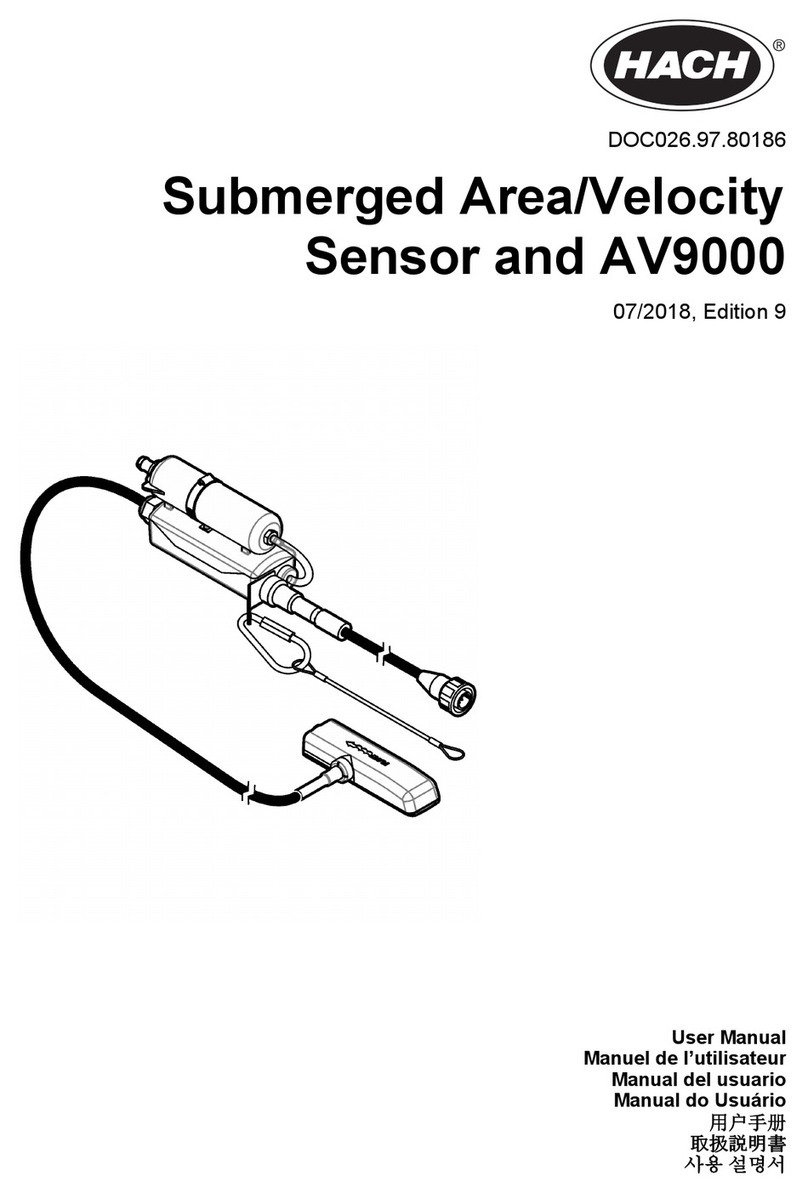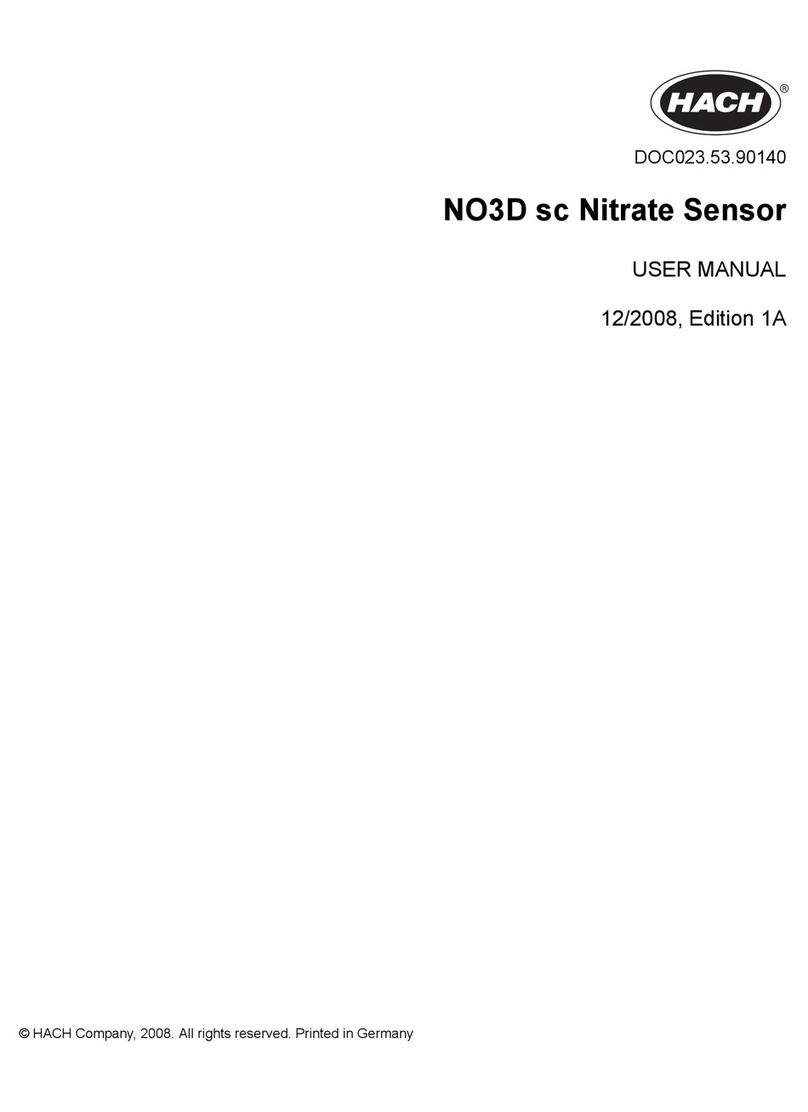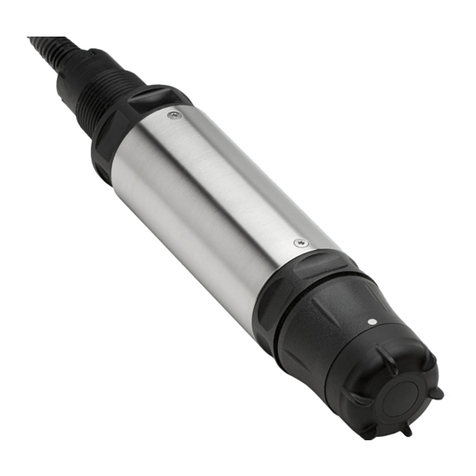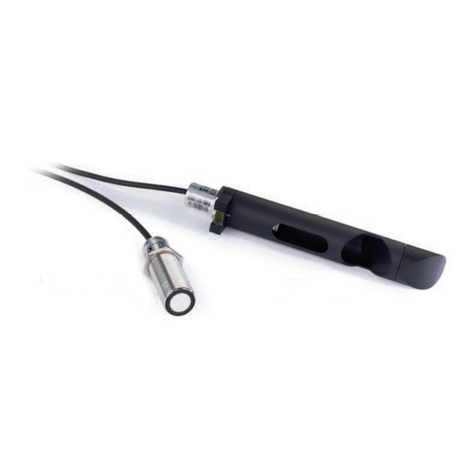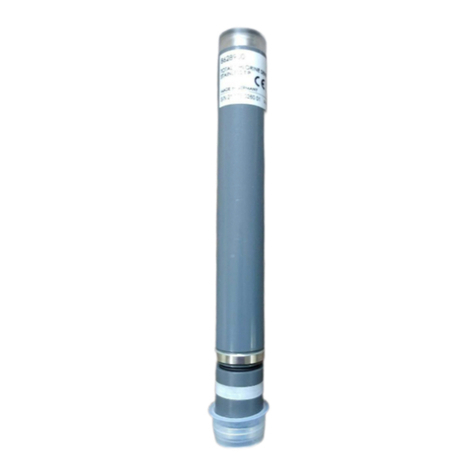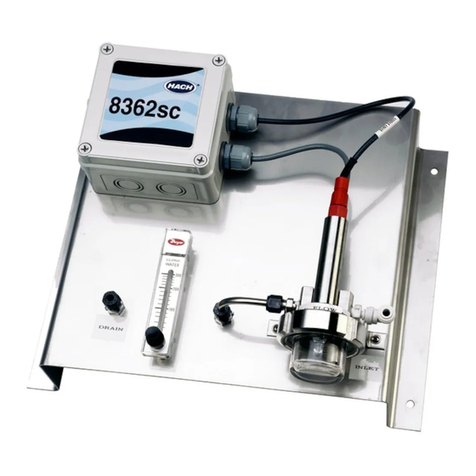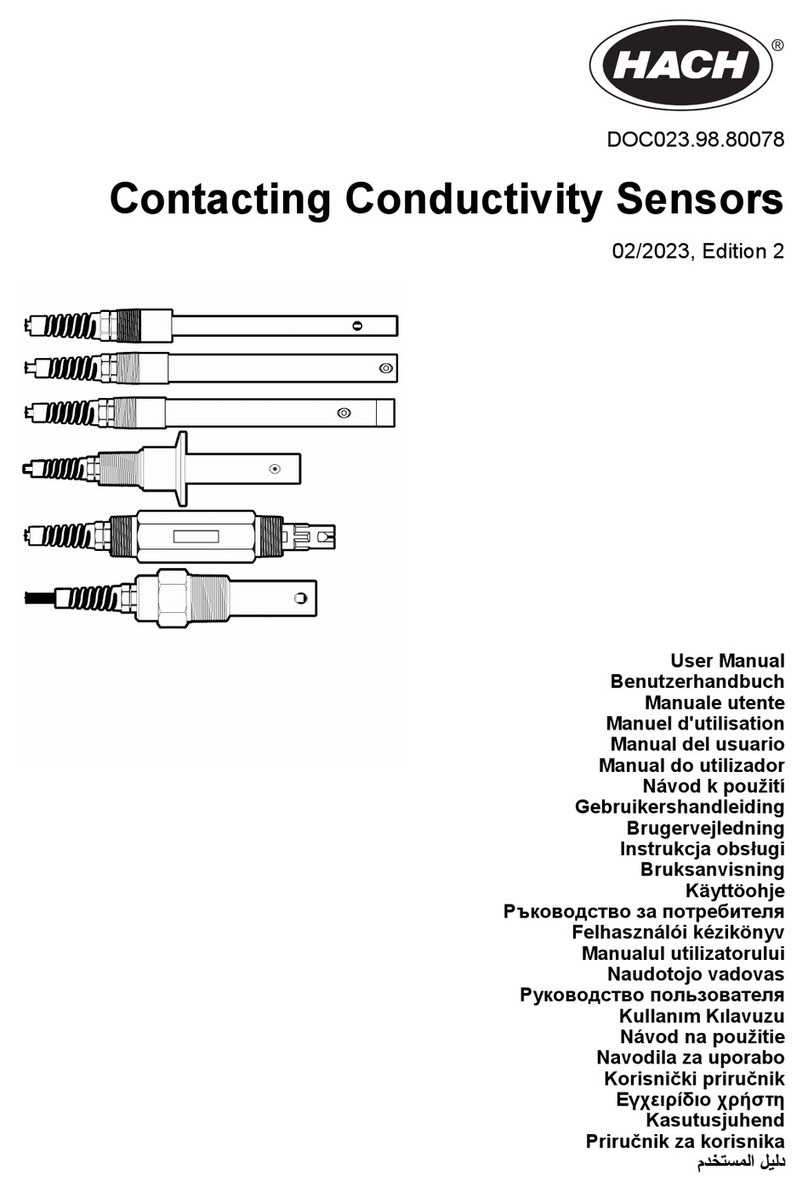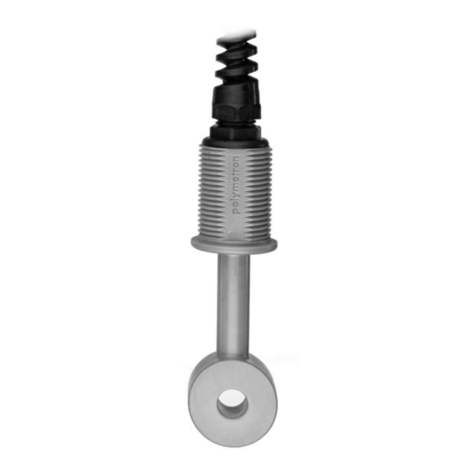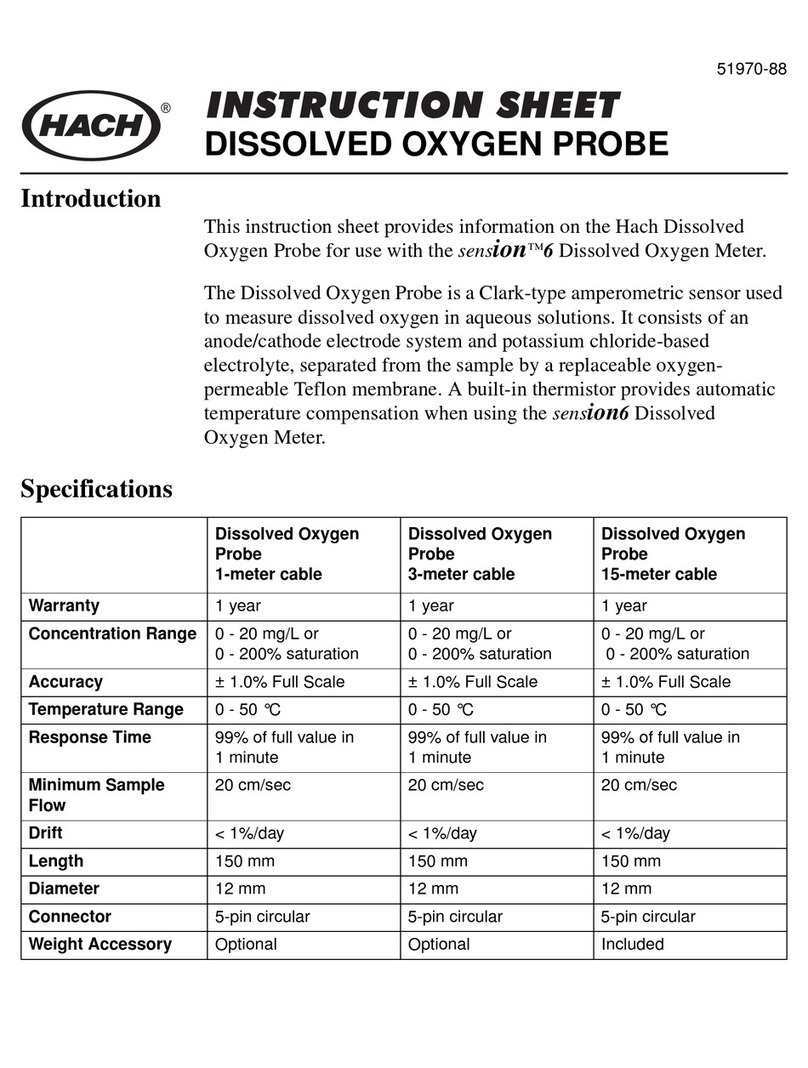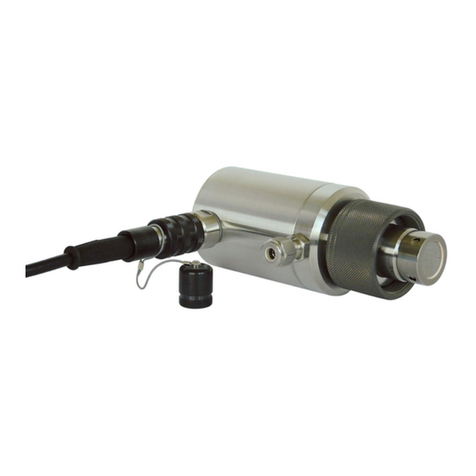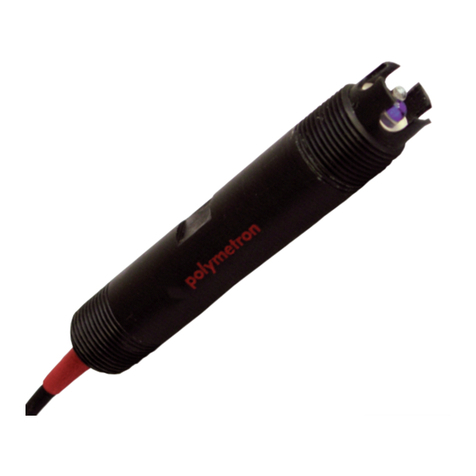
Table of Contents
Section 1 Specifications........................................................................................ 3
1.1 Sensor specifications............................................................................................ 3
1.2 Sensor configurations........................................................................................... 4
1.3 Sensor membrane specifications.......................................................................... 4
1.3.1 Oxygen sensors (Table 1).......................................................................... 4
1.3.2 Oxygen sensors (Table 2).......................................................................... 5
Section 2 General information............................................................................ 6
2.1 Safety information................................................................................................. 6
2.1.1 Use of hazard information.......................................................................... 6
2.1.2 Precautionary labels................................................................................... 7
2.2 Product overview.................................................................................................. 7
2.2.1 Operating principle..................................................................................... 7
2.2.2 Sensor components.................................................................................... 8
2.3 Product components............................................................................................. 8
2.3.1 Electrochemical sensor.............................................................................. 9
2.3.2 Protection caps........................................................................................... 9
2.3.3 Sensor recharge kit.................................................................................... 9
Section 3 Installation............................................................................................. 10
3.1 Sensor preparation............................................................................................. 10
3.2 Sensor installation.............................................................................................. 13
3.2.1 Sensor positioning information................................................................. 13
3.2.2 Sensor insertion........................................................................................ 14
3.2.3 Sensor removal........................................................................................ 14
3.3 Accessories installation...................................................................................... 15
3.3.1 External pressure sensor.......................................................................... 15
3.3.2 Weld-on stainless steel socket................................................................. 15
3.3.3 The 32003 insertion/extraction valve........................................................ 16
3.3.4 The 33095 sensor housing....................................................................... 17
3.3.5 Tuchenhagen Varivent® in-line access unit.............................................. 17
3.3.6 ORBISPHERE flow chambers.................................................................. 18
3.3.7 Multi-parameter flow chamber.................................................................. 19
Section 4 Maintenance......................................................................................... 20
4.1 Maintenance schedule........................................................................................ 21
4.2 Prerequisites for sensor maintenance................................................................ 21
4.3 Membrane replacement and sensor head cleaning............................................ 22
Section 5 Troubleshooting................................................................................. 28
5.1 Oxygen sensor.................................................................................................... 28
Section 6 Replacement parts and accessories......................................... 29
1

